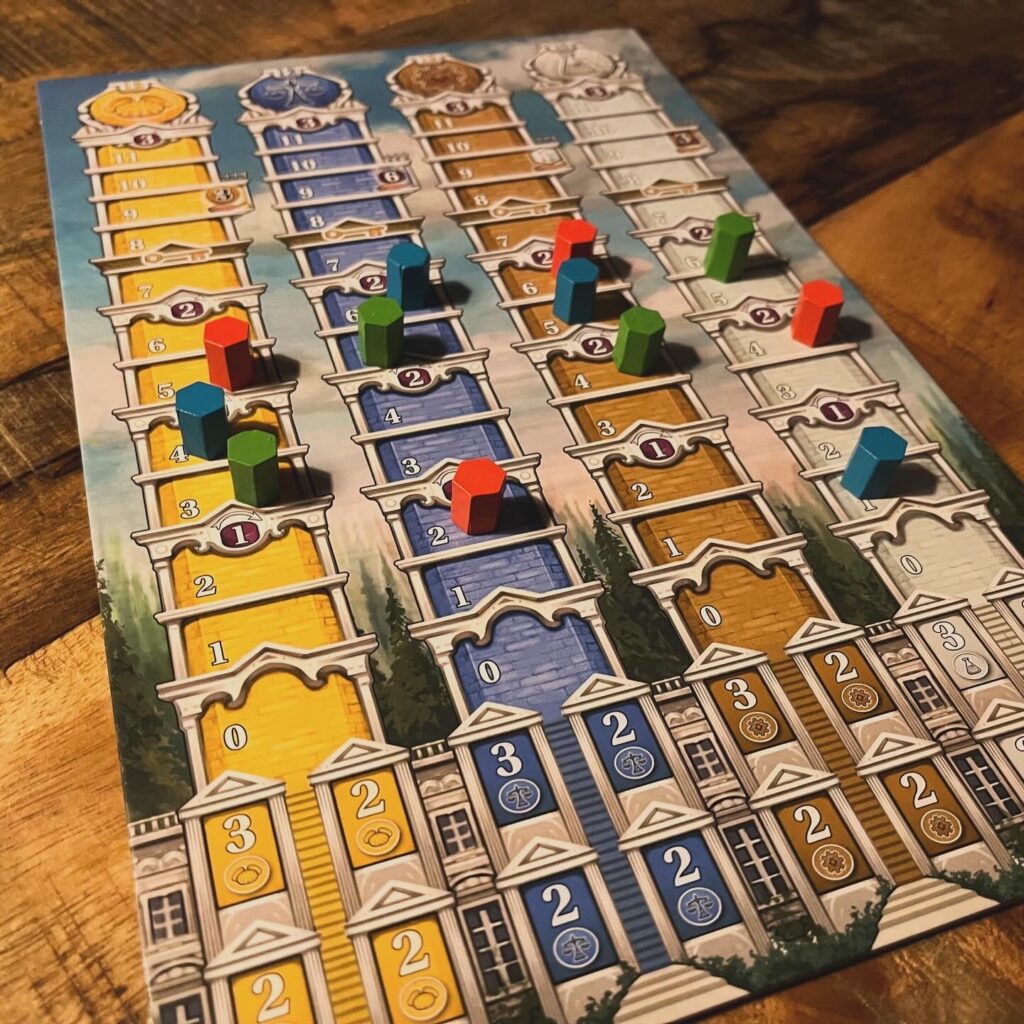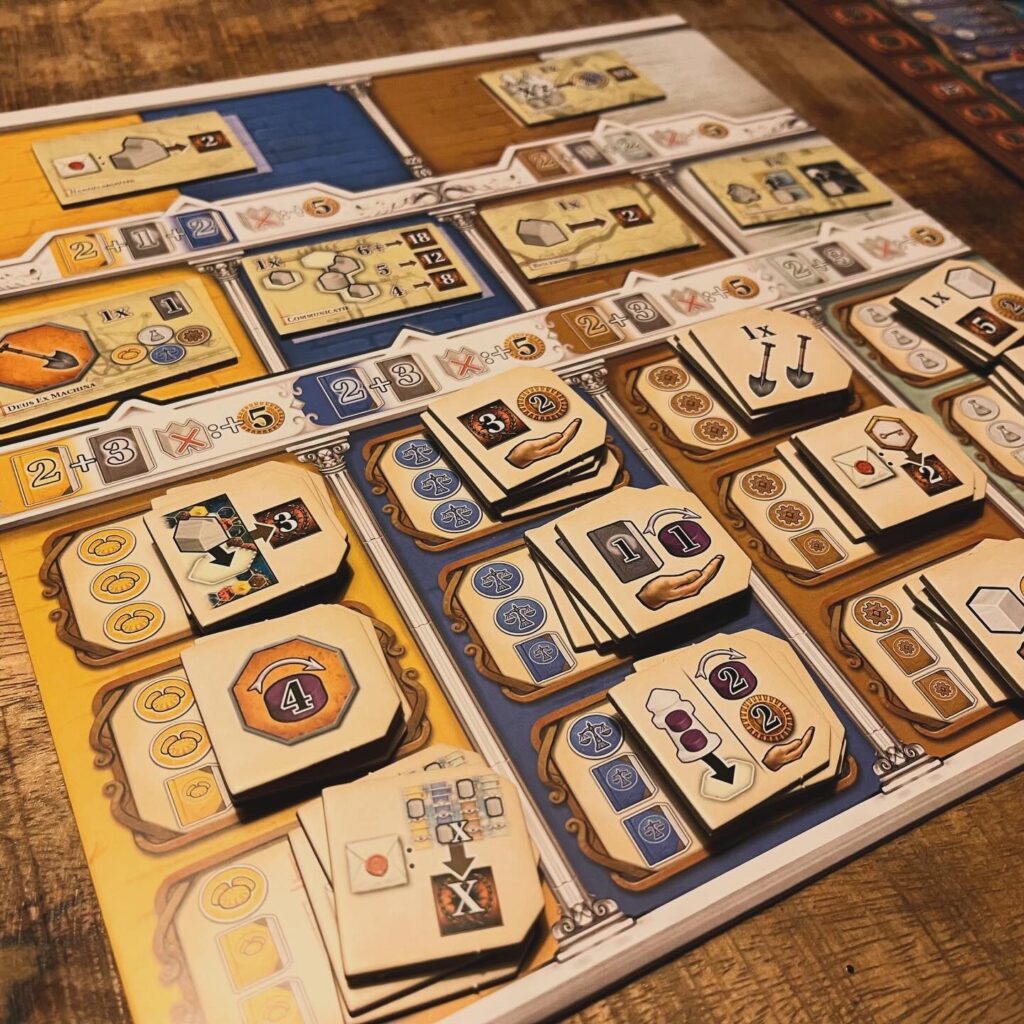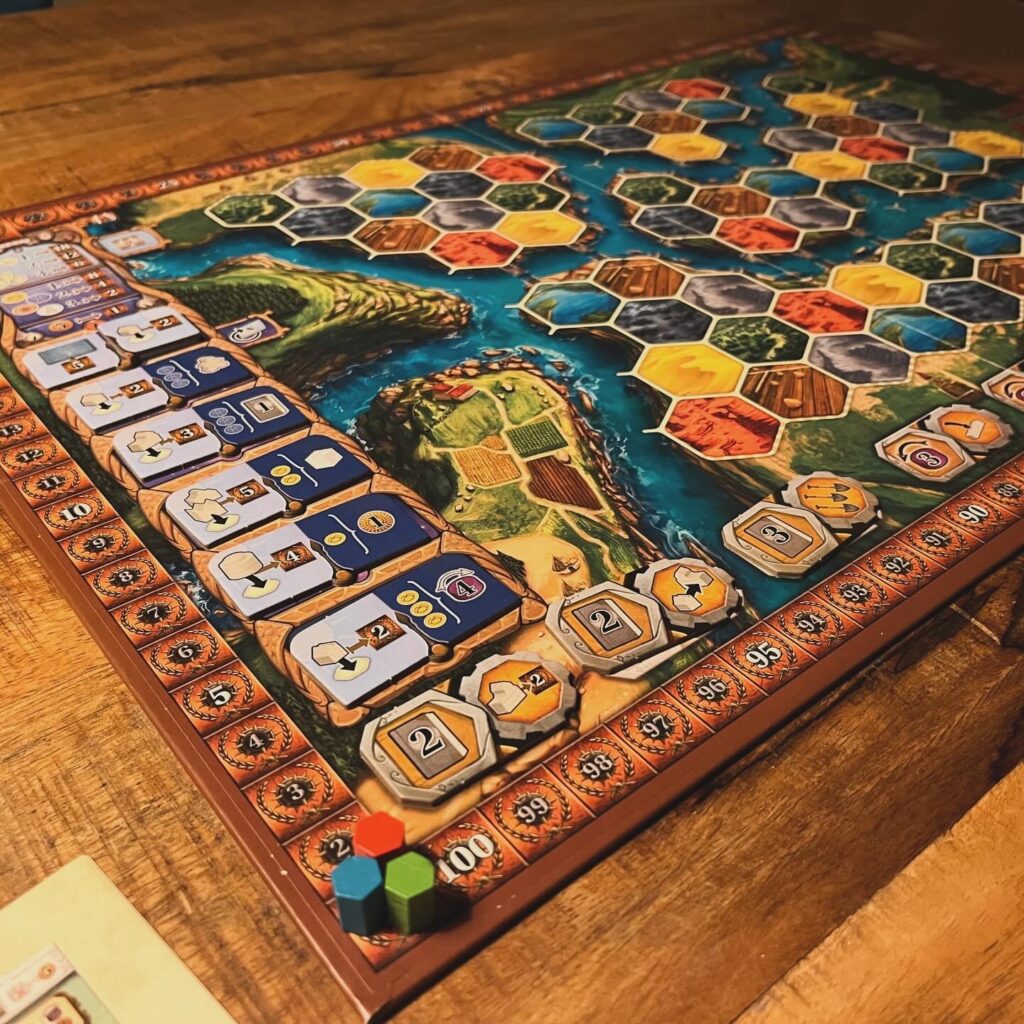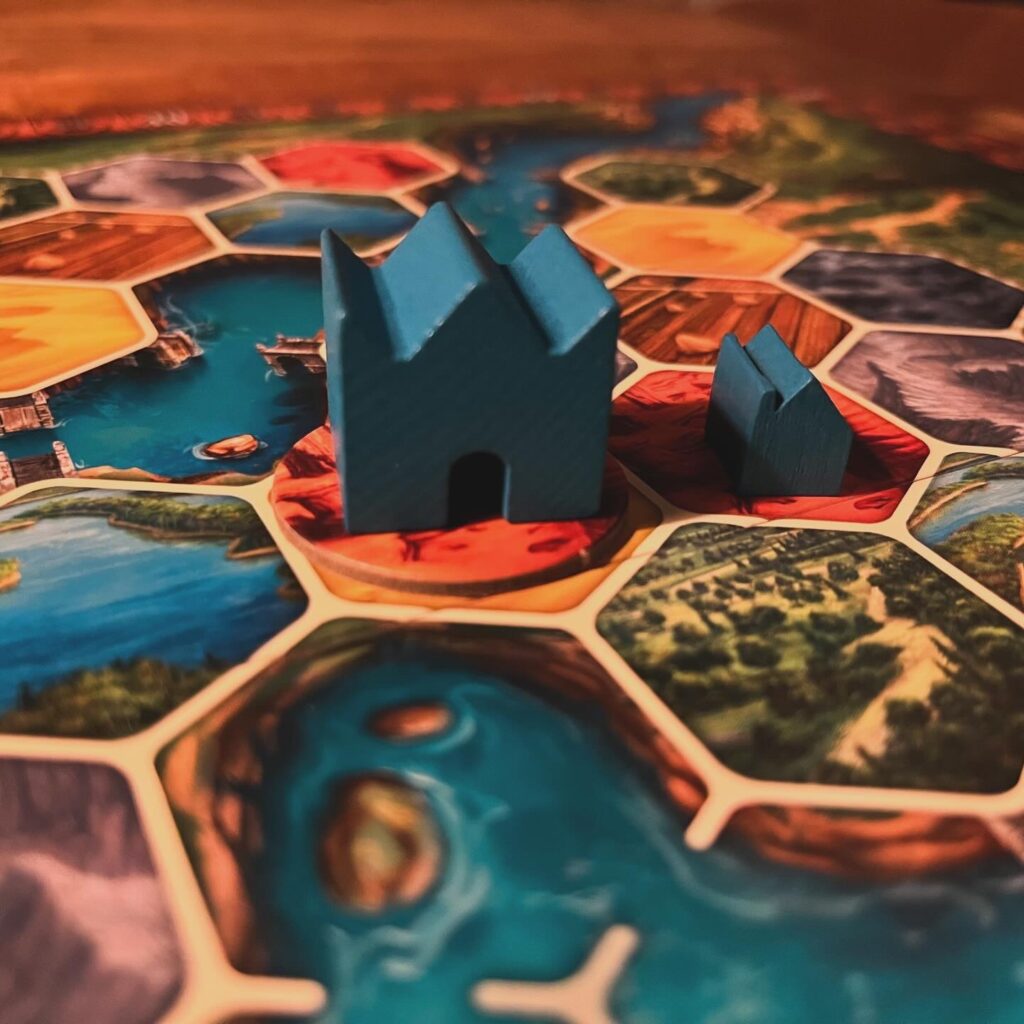In a world composed of hexagonal fields, you try to create a round community for your people. You achieve the above by transforming terrains to make the world habitable for your people. There are twelve nations and 1 – 5 players each take the role of one of these 12 nations. Collect knowledge, think innovatively, seek (at a safe distance) contact with other groupa and develop new skills in the Age of Innovation: a game set in the world of Terra Mystica.
Background
The subtitle of Age of Innovation already indicates that this game is a stand-alone game in the world of Terra Mystica. Therefore, the game concepts in Age of Innovation are based/inspired on the game elements and setting of Terra Mystica.

Terra Mystica was originally released in 2012 and quickly became popular among seasoned board players. The game featured complex gameplay full of tactical choices and strategic options. Also in Terra Mystica, players took the role of one of the peoples (then 14 different peoples) who also had to make nearby areas habitable by converting the landscapes. Terra Mystica is a game without any luck, where all information is public information. You know what other players can do, but not what they will do.
Several expansions were published for Terra Mystica and later a solo mode for the solo players among us. In 2017, Gaia Project was released, a standalone game that also adapted and reused elements of Terra Mystica. Although it incorporated and reworked certain elements, it was distinctive enough to stand on its own two feet and win over its own group of players without putting Terra Mystica out of business. Gaia Project was even heavier and more complex than Terra Mystica.
In 2022, Terra Nova was released. Again, this was a stand-alone game that reused and reapplied certain game elements, but this time a lot more accessible than the original game. An acquaintance of described it as an entry-level game to prepare experienced players to become expert players and venture into Terra Mystica.
By now it is 2023 and the world of Terra Mystica still contains plenty of possibilities. Age of Innovation is also an adaptation of Terra Mystica. Slightly more complex than the original game, but a bit more streamlined and accessible than Gaia Project. The focus is on so-called innovations that players will discover by collecting resources, building schools, making scientific progress and gathering knowledge.
Setup and gameplay
Normally, I try to give a good explanation of the game design and flow of a game while trying to convey the game feel. This time I will focus on the game feel. Age of Innovation contains many components and although the game rules take almost 4 pages for the game setup, this game setup is otherwise clear.


For experienced players of Terra Mystica – which is not me, by the way – much of Age of Innovation will seem fairly familiar, but there are some substantial differences. Age of Innovation feels like a streamlined and improved version of Terra Mystica. On one hand, some elements have been slimmed down (fewer peoples, for example) and clarified, but on the other, Age of Innovation adds some elements that were added in expansions/additions to Terra Mystica (including Automa-factory’s solo mode which I won’t go into further). I noted earlier the innovations. These are special features that players can purchase during the game with books. In addition, innovations also have other uses and can earn victory points.
For the player not familiar with Terra Mystica: in Age of Innovation, players have a home terrain and need to acquire more terrain. However, they must first make these terrains habitable. Players can place buildings and found a city to gain power. Players can also bet on science to gain scientific status for themselves and earn bonuses at the end of a round.
The game runs over 6 rounds and each round consists of 3 phases: 1. Revenues, 2. Actions and 3. Scientific bonuses and preparation for the next round.
In phase 1, players receive new resources that they can use during the game. Each player has a planning board and receives resources depending on which spots are visible on their planning board.


During the action phase, players can take actions that include transforming terrain and constructing buildings, upgrading buildings to improve them, enhancing their actions and properties, developing innovations and allowing students to make scientific progress.
Each player takes turns performing an action just until all players have passed during a round and then Phase 3 follows. After the sixth round, there is a scoring process. Players add the points won during the game to the points earned for conquered territory, their scientific progress and acquired resources.
Conclusion
Age of Innovation is a complex and strategic euro that is at the same time uncluttered and intuitive. There are many possibilities and chain reactions that players can elicit by planning their actions in the right ways. For players of Terra Mystica, most will seem familiar, but Age of Innovation offers a more comprehensive and streamlined version of the now modern-classic expert game.




